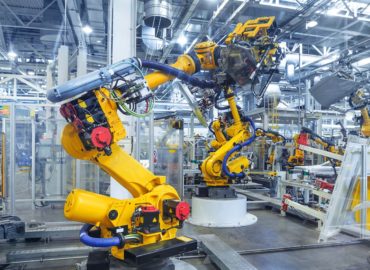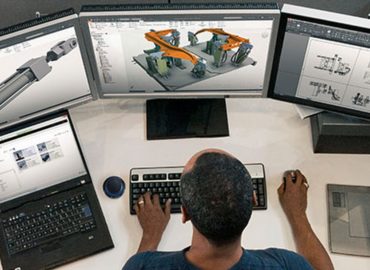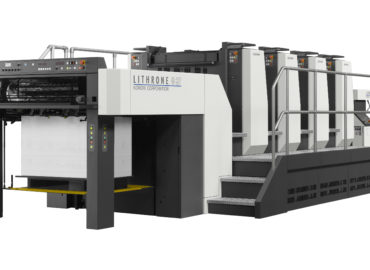Many important events in human history transformed human civilization from its cores. The first industrial revolution is one such event in our recorded history.
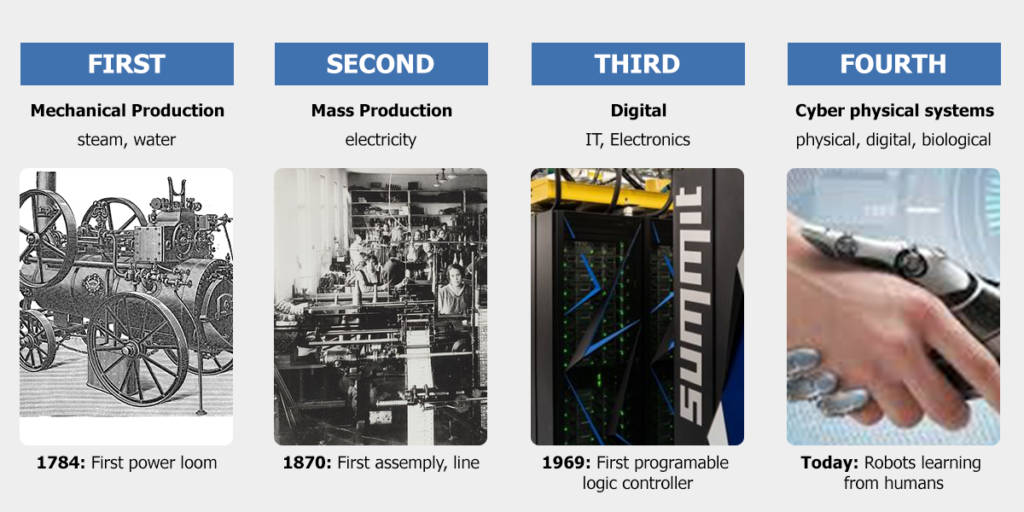
When we say the industrial revolution, we normally mean the first industrial revolution. But as of the 21st century, human civilization has faced three industrial revolutions and is at the starting point of the fourth one.
Many people don’t know about the last three industrial revolutions. That is why I have written this article. In this article, I am going to give you a complete overview of all the revolutions in our industry.
I am also going to explain and analyze in detail the importance of each industrial revolution to our human history and the transformation of our society.
Definition of Industrial Revolution
Industrial revolution is the process through which human society transitioned from an economy that depends on handcrafted products to an economy that depends on industry and machine manufacturing.
The industrial revolution started first in Britain in the 18th century. At that time, Britain was the most advanced nation in the world in terms of science, education, and practical knowledge.
After the first industrial revolution, which started around 1750 in Britain and ended around 1830, three more industrial revolutions took place. All of these industrial revolutions happened because of major transitions that happened in the world economy.
The last three transitions are not as major when compared to the first industrial revolution, but they are still major events that transformed human society.
The First Industrial Revolution
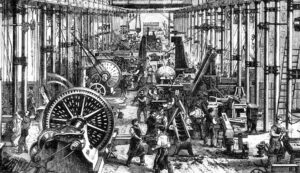
The first industrial revolution was the transition to a new production process in Europe and the United States. This transition happened for a period of around 80 years from 1760 to 1840.
This change in the manufacturing process resulted in radical transformations across all areas of the human society- Economy, Culture, Livelihood, Infrastructure.
New manufacturing processes included machinery based industrial factories, chemical manufacturing, Steam power and water power, etc.
The first revolution of industry started in Britain because Britain controlled the global trading empire with its colonies all around the world.
Innovation made all the industrial revolutions possible. A single machine could change the world to a great extent in those times. In the 18th century, Britain depended greatly on its textile industry.
During the mid-18th century, there were innovations like a flying shuttle, spinning jenny, water frame, power loom, etc. All of these innovations made manufacturing clothes and spinning yearns much easier.
The production rate skyrocketed because the machines were far more productive than humans for production works.
Other industries were benefiting from this kind of innovative machines as well. These industries are- the Iron & steel manufacturing industry, communication industry, etc.
The steam engine was the icon of the first industrial revolution. Many people were working on developing an efficient steam engine, but the most major development was made by James Watt.
Every single industry started using steam engines because they made production so much easier. The implementation of steam engines also revolutionized transportation and communication. Around the early 1800s, a steam-powered locomotive was introduced into the transportation system of Britain.
Communication started to become so much easier and faster, trades became faster. It seemed like life itself started becoming faster every day.
Soon after the invention of the steam engine, Britain started expanding the new manufacturing methods to their colonized parts of the world. And the rest of the world also started to adopt to become a machine-based industrial economy.
Standards of living started to increase at a constant rate for the first time in human history. The process of industrialization began and it continues to this day.
The Second Industrial Revolution
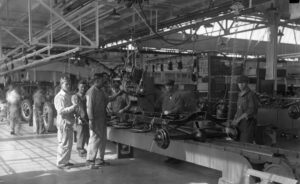
Historians consider the second industrial revolution to have started around the 1870s. This was a start to another transition in the manufacturing process and the world economy.
Do you ever wonder how we started using electricity in so much of our daily usage? The answer is also why we had a second revolution of industry.
Steam engine was the icon of the first industrial revolution, and the use of electricity was the icon of the second industrial revolution. Michael Faraday discovered the laws of electricity which started a whole new age in human history.
Faraday’s discovery is the reason why we see the use of electricity everywhere in our current world.
But the implementation of electrical energy only started during the second industrial revolution. We weren’t using electric energy to such a huge potential until after world war II.
There were other important innovations that boosted the transition of the manufacturing process during the second industrial revolution. These innovations lead to the following changes in the world economy-
- Iron and steel production became widespread
- the use of machinery became more widespread across many industries
- Steam power was being used at the highest rate in human history.
- The invention of telegraph transformed worldwide communications and information transfer
- Petroleum and petroleum-based products started to become the main fuel of many industries
The second industrial revolution primarily happened across Europe, the United States, and Eastern Asian countries like Japan. Then it spread across other continents and the third-world countries.
Some historians consider the second industrial revolution to have lasted until the 1950s.
The Third Revolution of Industry
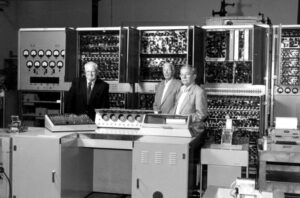
The rotary steam engine was the driving force behind the first industrial revolution. But no engines were the driving force behind the third industrial revolution.
The third industrial revolution was driven by digital technologies, renewable energy, and 3D printing.
Industrial revolutions have a slow start, and the start of an industrial revolution is initiated by innovations. The icon of the third industrial revolution was the internet.
The first trigger of the Third Industrial revolution started in 1969 with the development of the Advanced Research Projects Agency Network. This network triggered the development of the internet.
Digital technology had started its journey long before this project with the invention of a computing machine by Alan Turing. Computers are the conjunction between the second industrial revolution and the third industrial revolution.
Computers or computing machines were being used in 1980 in factory production around the 1980s. That was the reason for another transformation in the manufacturing process affecting the world economy.
The Third Industrial Revolution had a very deep impact on ICT, knowledge, health, and manufacturing processes.
A focus on efficiencies and time delivery costs of manufacturers and distributors caused fundamental changes in the nature and location of manufacturing processes .
The third revolution lasted until the early years of the 21st century and was the most impactful technological revolution in all of human history.
The Fourth Revolution of Industry

The age we are living in today is the age of The Fourth Industrial Revolution. The term was coined by the founder of the World Economic Forum Klaus Schwab in 2016.
He wrote a book on this exact title analyzing how we are at the start of a fourth revolution of industry and how this revolution will impact our lives in the coming decades.
Klaus Schwab explains the FIR in these words, “A technological revolution that is blurring the lines between the physical, digital and biological spheres”.
No better line explains the fourth revolution in one sentence. Let’s break down what this means.
Technologies like Artificial Intelligence, Autonomous Vehicles, Internet of Things are becoming ingrained in our daily lives, and even in our bodies. When we look around, we find so many implications of these technologies- Voice Activation, Virtual Assistants, Facial Recognition, Healthcare Sensors, etc.
The highest level of academic and medical researchers are also using artificial intelligence to analyze data and produce faster results. AIs are now doing genome sequencing, protein analysis, almost everything about genetic engineering can now be done by Artificial Intelligence.
Artificial Intelligence can control all the machines in a single factory or a production system and optimize the product for maximum results, without any input required from humans.
So far, we have seen that the third industrial revolution was the most impactful technological revolution in human history. But we can only imagine what the FIR will bring for us in the future.
The future is always unpredictable, but artificial intelligence gives us unlimited hopes and possibilities for a better future and a greater good for humanity.
Concluding Words
We all look forward to a bright future for humanity. We all know that there is going to be in the future is a lot more technological innovations. Let’s hope for the best and see what the future holds for all of us.
Thanks for reading this article, let me know any of your feedbacks in the comment section below. I would also love to hear about what kind of topics you want me to write about next.
Check out some of our other articles below:
The fourth industrial revolution and its impact on the world
Historical background and impact of Industrial Revolutions
How to choose the perfect e-learning course
A leading manufacturing process in 21st century- Blow Molding Technology
Best tips for a production design manager
What is the reverse engineering technology?
3D Scanning Technology- How does it work?
The technology of offset printing



